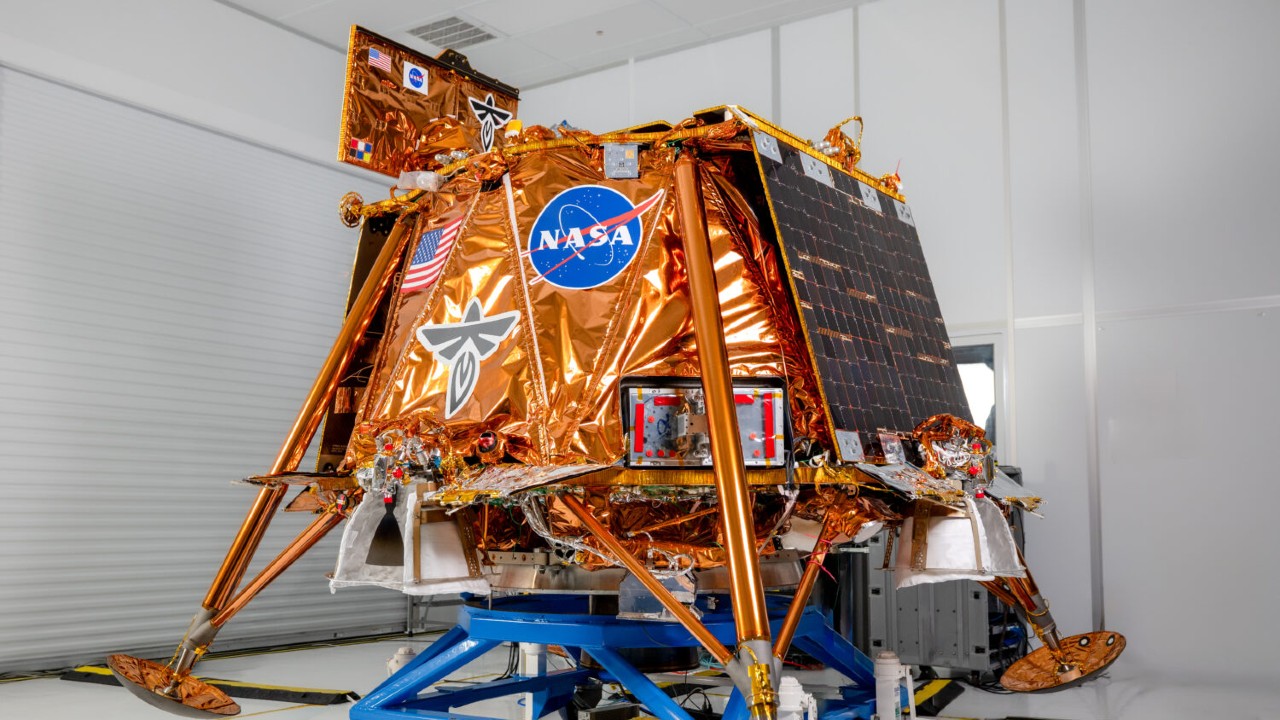
Firefly Aerospace's moon lander is ready for its upcoming lunar voyage.
The company announced its Blue Ghost lunar lander completed environmental testing at NASA's Jet Propulsion Laboratory (JPL) in mid-October and is now ready to be shipped to Kennedy Space Center in Florida. NASA and SpaceX plan to launch the lander from Launch Complex 39A atop a SpaceX Falcon 9 rocket during a six-day window that opens no earlier than mid-January 2025. The mission is known as "Ghost Riders in the Sky."
Blue Ghost will carry a variety of payloads to the moon, some of which are in support of NASA's Commercial Lunar Payload Services (CLPS) program. CLPS pairs scientific payloads developed by NASA with commercial lunar landers headed for the moon on private missions.
The environmental testing subjected Blue Ghost to extreme temperatures like those it will experience in flight and on the moon, in addition to high levels of vibration and acoustic noise to simulate launch conditions.
Firefly Aerospace says its lunar lander performed well during the testing. "Blue Ghost aced environmental testing and proved the lander is performing 100% as expected, which is a testament to the incredible Firefly team," Firefly Aerospace CEO Jason Kim said in a company statement.
"This team has gone above and beyond with innovative testing approaches to ensure Blue Ghost is flight ready. While we know there will be more challenges ahead, I'm confident this team has what it takes to softly touch down on the lunar surface and nail this mission."
When it launches, Blue Ghost will carry 10 different payloads for NASA including one that will test a new electrostatic system to repel harmful moon dust. The lander will take 45 days to travel to the moon, where it will land in Mare Crisium, a lunar "sea" (a large plain of basalt) that was home to the 1969 crash-landing of the Soviet Union's Luna 15 probe.

Once there, Blue Ghost will spend one lunar day (about 14 Earth days) operating its payloads before the cold, dark lunar night sets in and deplete the lander of its solar power source. Blue Ghost will operate for a few hours once night sets in, taking images of the lunar sunset and collecting data on how the surface of the moon behaves during lunar dusk.
Blue Ghost's payloads include a lunar retroreflector that will be used to take precise Earth-moon distance measurements, the Lunar PlanetVac vacuum developed by Honeybee Robotics that will sample moon dust, and the Stereo Camera for Lunar Plume-Surface Studies (SCALPSS), a tiny camera that will capture detailed images of how the lunar surface reacts with the lander's exhaust plumes during landing.
NASA is increasingly turning to commercial lunar landers to deliver its science payloads to the moon through the CLPS program. In August, the agency awarded Intuitive Machines $116.9 million to carry six agency science instruments to the lunar south pole in 2027 on one of the company's robotic moon landers. The company landed its Odysseus spacecraft on the moon in February 2024, the first time a private spacecraft had ever landed on the moon in what was the first U.S. moon landing since 1972.
NASA had been developing its own robotic lunar rover known as VIPER, but canceled the program in July 2024 due to rising costs.







